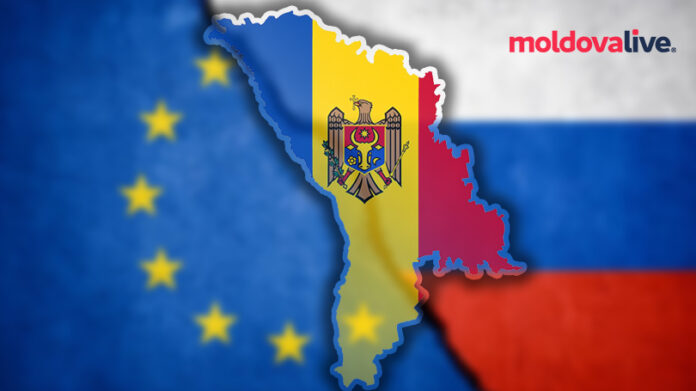The transformation of “frozen conflicts” in the EU-Russia common neighborhood around the Black Sea region is advancing in some areas while remaining relatively unchanged in others. The central factor driving the changes in the geopolitical landscape of post-Soviet territorial conflicts is Russia’s 2022 war of aggression against Ukraine. Since 2014, Russia’s actions—rejecting Ukraine’s territorial integrity and attempting to occupy new territories to defeat Ukraine and impose political control—have diminished its role as the gatekeeper of the old geostrategic balance of power in the Black Sea region. As a result, the previous asymmetries in certain “frozen conflict” situations that favored Russia have now shifted in the opposite direction, the Eastern Europe Studies Centre reports.
Although Moldova is very close to Ukraine, where Russian aggression continues, the “frozen conflict” on its territory is increasingly seen as an argument for a future positive solution. Economically, the Transnistria region depends exclusively on its access to the European market through the constitutional territory of Moldova and with the permission of the Moldovan authorities (customs, regulatory bodies, etc.). Politically, the separatist regime must cooperate with Chisinau to survive in the context of reduced budget revenues caused both by the war (sanctions on Russia and disruptions in supply chains) and by Moldova’s recent reintegration policies that aim to unify customs regulations, in force since January 2024. The enormous external support for the current Moldovan authorities limits any attempt by the political-economic elites of the separatist region to defend their case. The US, EU, and Ukraine side with Moldova, leaving Transnistria largely isolated. Russia’s international status is severely damaged by its aggression against Ukraine, which has an isolating effect on all its satellites, including the separatist regime in Moldova.
In spring 2024, the administration of the separatist regime proposed signing a declaration of joint commitment to resolve the conflict only by peaceful means.
FOR THE MOST IMPORTANT NEWS, FOLLOW US ON TWITTER!
The imbalances in the former geopolitical balance of power in the region have put the “5+2” format of negotiations dedicated to the settlement of the Transnistrian conflict on hold. This format was already impaired back in 2019 but now faces “clinical death” due to the events in Ukraine. Neither the West nor Ukraine agrees to conduct business as usual regarding the Transnistrian conflict and is prepared to revisit it once the war’s prospects favor Ukraine. Specifically, until the war is over, a political solution to the Transnistrian conflict will remain unachievable since one side of the negotiation table (Russia) is conducting a war of aggression against another (Ukraine). Moldova insists on a peaceful settlement of the conflict, which does not prevent it from investing in the modernization of its defense capacities, mainly with the support of the EU (the brand-new Security and Defence Partnership). In spring 2024, the administration of the separatist regime proposed signing a declaration of joint commitment to resolve the conflict only by peaceful means. In this sense, all interested stakeholders show a predisposition only for a peaceful settlement scenario. Despite Russia’s untrustworthiness (as evidenced by the ongoing conflict in Ukraine), Russia’s inability to reach Moldova through a land corridor via Ukraine, and the separatist regime in Transnistria’s incapacity to invest in its military capabilities (due to Russia-oriented sanctions and supply disruptions) currently favor non-escalation.
The dynamics of the “frozen conflict” in Moldova in the short term stem from two exogenous factors. Firstly, the more immediate issue involves energy supplies. Moldova faces risks related to the Russian gas supply to the Transnistrian region, which could cease if no mechanism replaces the current transit gas deal between Ukraine and Russia, which is set to terminate at the end of 2024. Secondly, the situation on the battleground in Ukraine could also impact the present asymmetry in the dialogue with the breakaway region that favors Moldova. If Russia achieves a military breakthrough in Ukraine, this may have repercussions on the separatist regime’s interest in initiating new provocations. In late February, the region asked Russia to intervene to help mitigate the effects of the new customs policy implemented by Chisinau. The likelihood of such events largely depends on the Western combination of political will and industrial preparedness to support Ukraine with weapons, manpower (training), and financial aid.
The latest OSCE-mediated “1+1” talks between Chisinau and Tiraspol (the administrative capital of the Transnistria region), held in mid-May, have shown that cooperation is the preferred approach of all parties. It makes this “frozen conflict” different from the rest in the Black Sea region. For example, in one case, the separatist regime was dismantled after a unilateral military operation (Nagorno-Karabakh). On the other hand, Russia’s high degree of control over the breakaway regions of Georgia precludes any direct talks between Abkhazia, South Ossetia, and Georgia, even if facilitated by the West.


